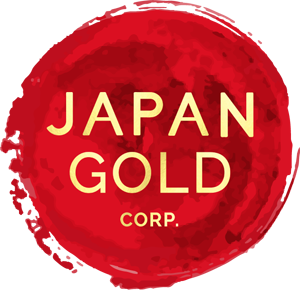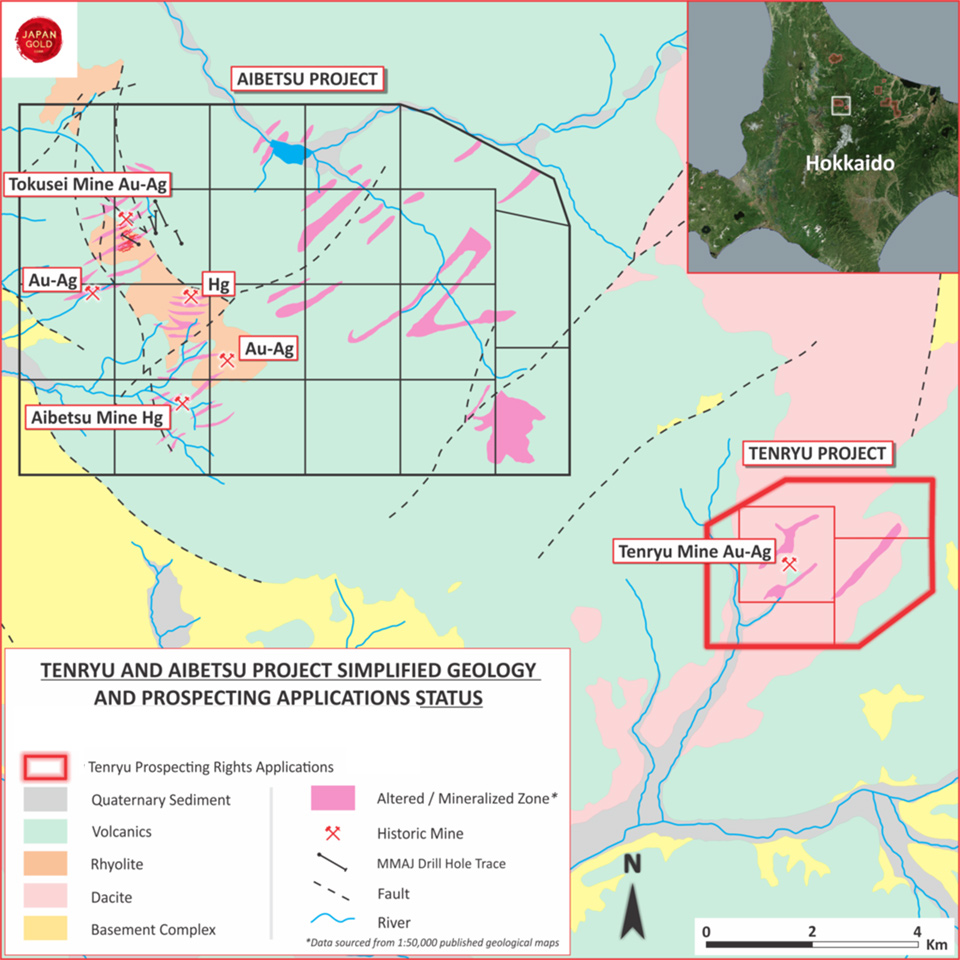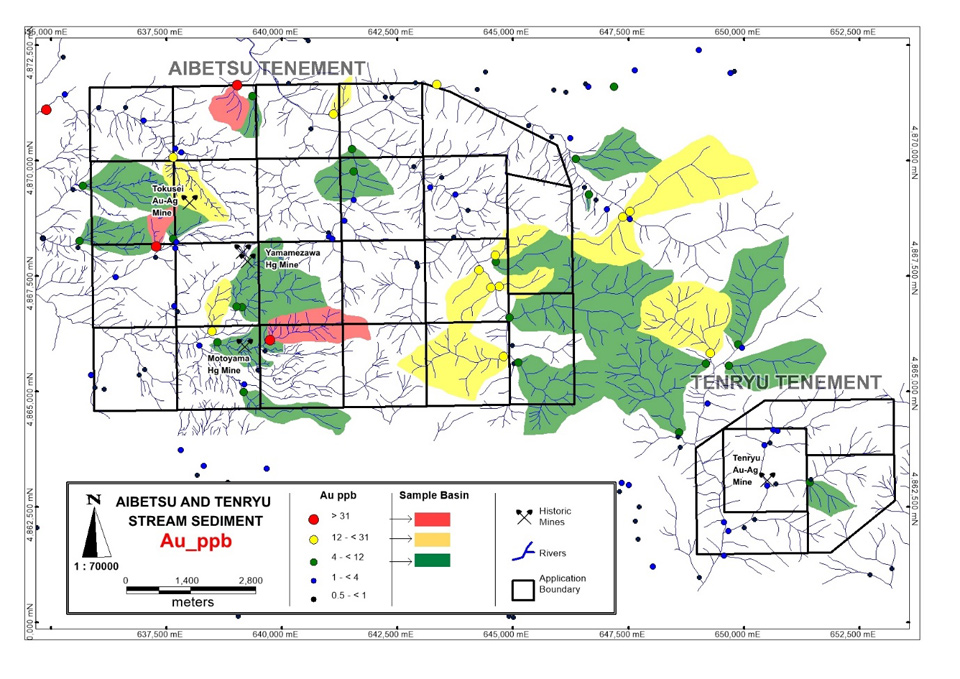The Tenryu Project
Highlights
- Located three kilometres southeast of Japan Gold’s Aibetsu Project.
- Little information is available on the Tenryu workings which closed in the early 1940’s
- Tenryu is hosted in similar volcanic stratigraphy to the historic mine workings located within Japan Gold’s Aibetsu Project, the most prominent of which, Tokusei produced 38,580 ounces of gold and 472,620 ounces of silver between 1930-1942¹.
- Mapping from the 1:50,000 scale Japanese government geological map shows three parallel northeast trending altered / mineralized zones over a 2.5 by 2 km zone centred on the Tenryu workings
- A combination of stratigraphy, northeast mineralized structures and a lack of modern exploration in the region makes this an attractive exploration target in the Company’s growing project portfolio in Japan.
Project Details
The Tenryu Project comprises four (4) contiguous Prospecting Rights Application blocks (1,267 Ha) centred on the historic Tenryu gold-silver mine located in the Kamikawa district of northern Hokkaido, within the Kitami mining region.
History
Little information is available on the Tenryu workings which closed in the early 1940’s, however, a cyanide gold extraction plant was located four kilometres downstream of the now collapsed portal which is believed to have processed ore from Tenryu and other workings nearby in the early 1940’s.
Geology and Mineralisation
The gold mineralization style at Tenryu is classified as rift-related, low-sulfidation epithermal. Mineralization is typically associated with quartz-chalcedony-adularia-sericite±calcite fill in silicified and veined- or brecciated-structures, including dark sulfidic material, termed ginguro bands. Veins display crustiform-colloform banding, cockade, lattice blades (quartz pseudomorphs after calcite, indicative of fluid boiling zones) and other quartz textures typical of high-level epithermal systems. Wall-rock alteration comprises a silicified core and peripheral mixed quartz-illite-smectite (argillic) assemblages.
Tenryu is hosted in similar volcanic stratigraphy to the historic mine workings located within Japan Gold’s Aibetsu Project, the most prominent of which, Tokusei, produced 38,580 ounces of gold and 472,620 ounces of silver between 1930-1942¹.
Mapping on the 1:50,000 scale Japanese government geological map shows three parallel northeast trending altered / mineralized zones at Tenryu, over a 2.5 by 2 km area centred on the historic Tenryu mine workings.
Exploration
The Company has completed a compilation of published exploration data and historical mining data for the Tenryu Project. No field work has yet been undertaken on the project by Japan Gold.
Exploration Potential
Low-impact exploration activities are recommended across the Tenryu Project area so the project may be ranked against Japan Gold’s other projects. The proximity of the Tenryu workings to the Aibetsu Project, a similar stratigraphy, vein trend, and style of mineralisation, make the Tenryu application area an attractive exploration target which has not yet been systematically explored utilising modern exploration methods.
References
1 Watanabe, 1996. Genesis of Vein-hosting Fractures in the Kitami Region, Hokkaido, Japan. Resource Geology, v46(3), pp 151-166, 1996.



